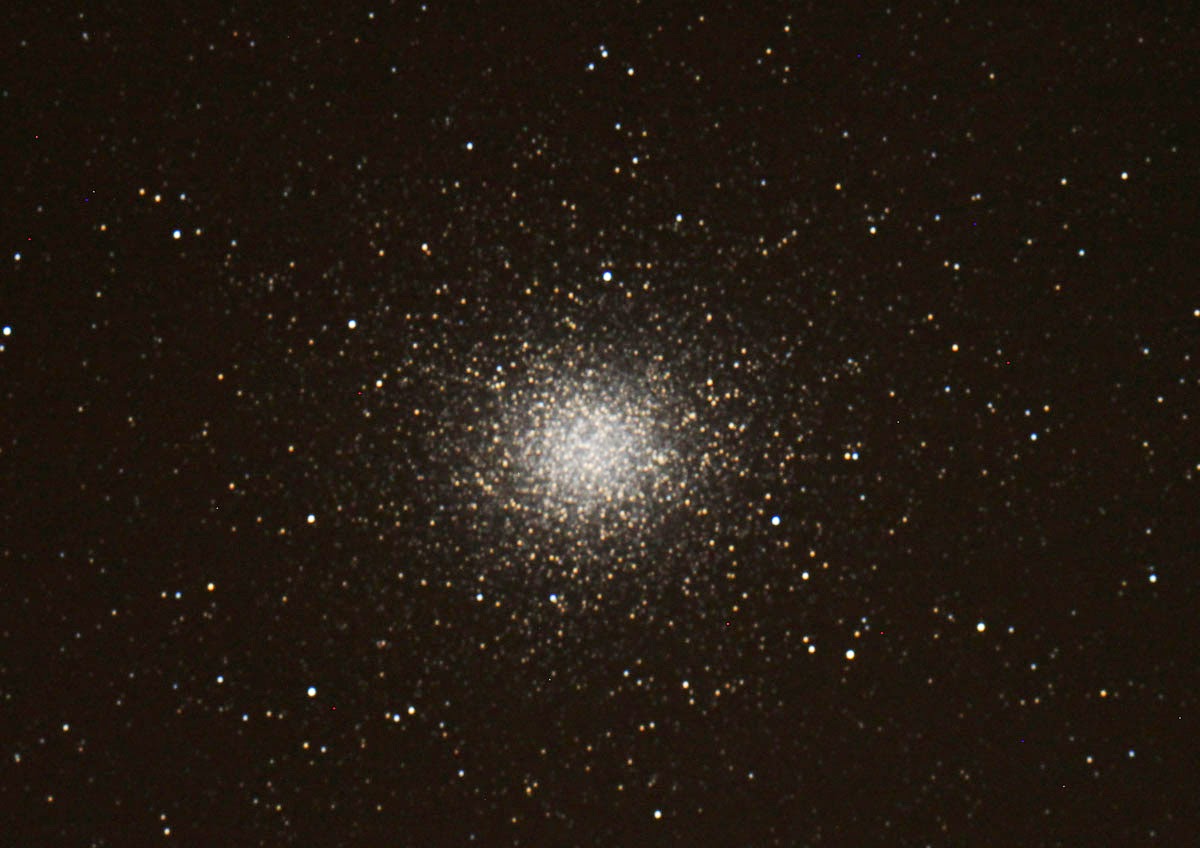Note that the evening I visited him was the day after our Kitt Peak Star-B-Que, so the crescent moon was high in the sky and the first natural target. So this image can be directly compared to those taken 24 hours earlier from that blog post. That image was a mosaic from a series through the 14" telescope. The TEC has a focal length of 980mm, so the moon comfortably fits into the frame of the APS sensor of the T3 Canon I was using.
 After hooking everything up, it was apparent that the setup was working fine. The autoguider requires use of a laptop computer - always a drawback for me since I run off batteries, but nowadays a common accessory. Since I was also new with using the T3 under a dark sky, I continued to run at some high ISOs, and for the first stellar target shot the Leo Trio, with Messier 65, 66 and NGC 3628 (counter-clockwise from lower left). This is a combination of 9 frames of various exposures and ISOs... My intent was to only prove the setup worked, but before shutting down, we moved down to take a shot of the great globular cluster Omega Centauri. At right is a single 2 minute exposure at ISO 800.
After hooking everything up, it was apparent that the setup was working fine. The autoguider requires use of a laptop computer - always a drawback for me since I run off batteries, but nowadays a common accessory. Since I was also new with using the T3 under a dark sky, I continued to run at some high ISOs, and for the first stellar target shot the Leo Trio, with Messier 65, 66 and NGC 3628 (counter-clockwise from lower left). This is a combination of 9 frames of various exposures and ISOs... My intent was to only prove the setup worked, but before shutting down, we moved down to take a shot of the great globular cluster Omega Centauri. At right is a single 2 minute exposure at ISO 800.So the scope shows promise, not only for astronomical targets, but I anticipate it will be fun for terrestrial shooting too at long-range. I'm working on a mount so that it can be used when we go to the Grand Canyon Star Party later in the month. It should work well for shooting those mule trains and river rafters far below the rim - can't wait!

















1 comment:
Awesome scope Dean! I bought one as a 40th birthday present to myself a few years back and have enjoyed it tremendously since. I'll have it at the North Rim next week!
Alan
Post a Comment